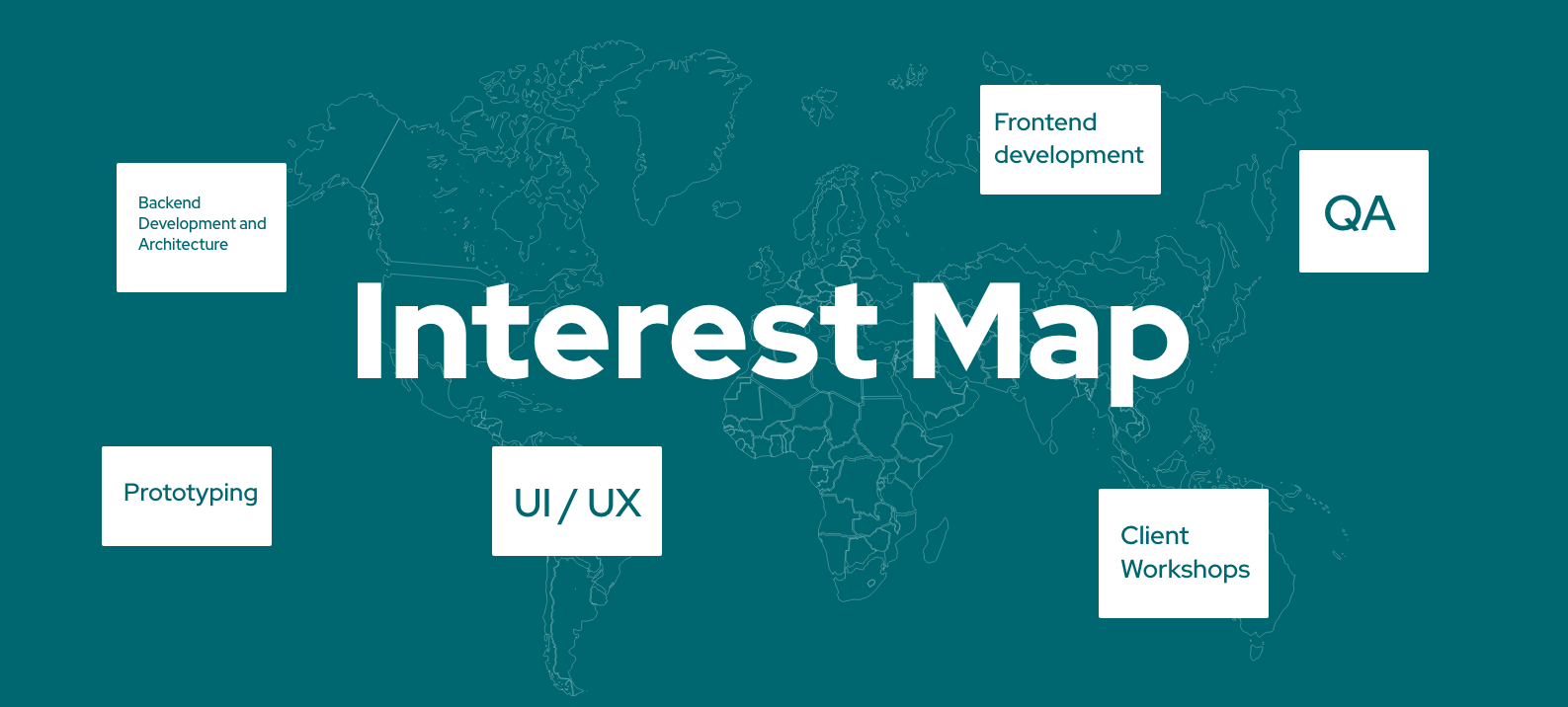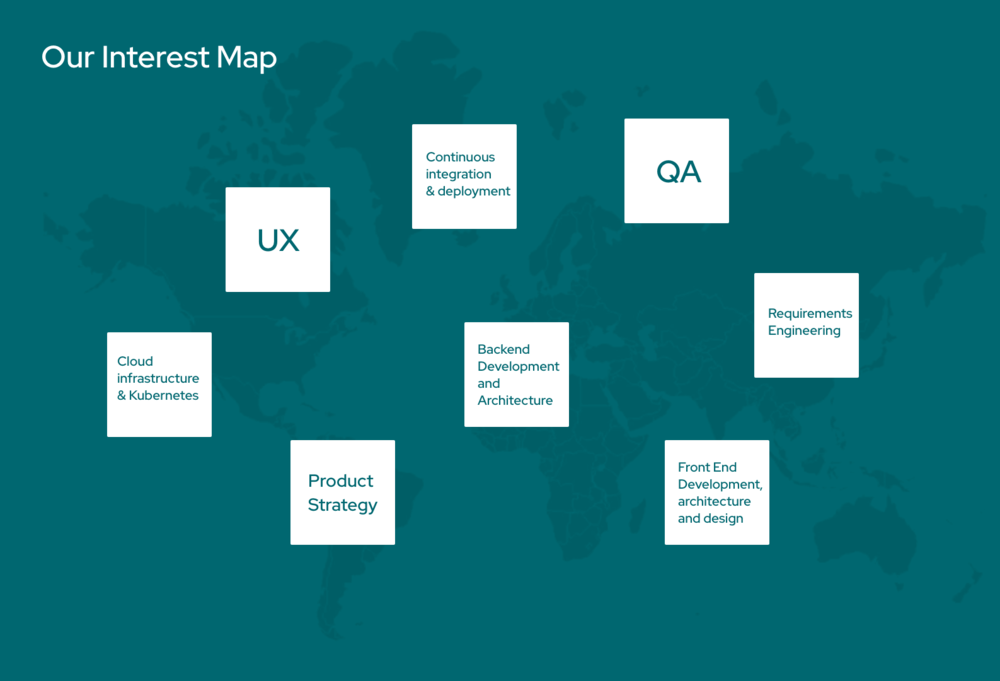Interest Maps: 7 Positive effects of visualizing the interests of your team
Have you ever visualized the individual interests of your team members? If not, you are definitely missing out on a great experience! Interests maps unleash hidden potentials and interests, but they also make it clear which topics are not of interest to your colleagues. Pretty good to know, right?
Keep on reading and we will introduce you to this easy-to-apply technique and the 7 positive effects we have observed.
How DO they work?
Just like with your projects, knowing where you are heading is a good thing. So before you start with visualizing your interests on the interest map, make sure that its purpose is understood by the team. To do so, you could use something like this as an introduction:
We're all interested in specific topics more or less. We use this interest map to communicate what we are interested in to the team to work better together and to avoid doing work that we do not enjoy.
Initialize
Interest maps are a simple and easy-to-learn collaborative team adventure. In the first round, every team member adds interest areas aligned to the project to a shared board. At Trustbit, we use miro.com, since we all work remotely. If you are sharing an office with each other, a wall and post its will do a decent job as well.
First step: Add areas of interests
To start, add areas of interests that align with the project requirements to a board. An interest area could be something low-level as Java Streams or a more high-level area such as UX. Keep in mind that hobbies and interests not aligned with the project requirements are not relevant for your interest map.
Second step: Add your avatar to the areas you are interested in
In a second round, every team member adds an avatar to an interest area. By adding the avatar, you show in which areas you are interested in. Using a photo for the avatar helps and gives the board a more individual touch. Of course, it works without that as well, but it sure improves the experience if you use pictures or avatars.
Discuss
Self reflection & popular areas
After individual interests have been added, the team revisits each interest area and discusses if an interest area is perhaps already too crowded. Throughout the discussion, you will experience that team members start to reflect if they are really that interested in an area. This is the first benefit we get from this visualization: Questioning yourself if you're really that interested in an area. Maybe you have just felt obligated to add your avatar to a certain area because that’s what you have done extensively in the past? Well now is the time to break the pattern and start communicating what you are really interested in.
Establishing the same mental models
Furthermore, it helps to establish the same mental models of high-level terms like e.g. UX. If you are interested in UX, what exactly do you mean by that? Are you talking about a specific aspect like user research, or are you referring to UX on a mere visual level? Getting on the same page with vague terms is a huge benefit for your team. After all, it will help avoid misunderstandings in the long run.
Low engagement areas
The next step in the process is to discuss areas that have low engagement. You might discover that team members are interested in an area but do not feel like they have enough expertise to associate their avatar with that area. This is the chance to encourage people to build up expertise!
Focus is key
In the last iteration, discuss if some of your team members may have too many interests spread across the board. This may be harmful to their focus. So perhaps, encourage them to narrow down their interests based on their own prioritization.
Strategic happiness management
Speaking of individual and shared interests: In one of our regular Innovation Incubators, we developed Skwill - an application dedicated to making people happier & teams better. And since we sincerely believe in the power of visualization, we decided to share this tool with the world!
Iterate
Visualizing your interests doesn’t take long and is a pleasant experience for your team, as it is just different from your day-to-day business. Good thing then that you should redo the interest maps from time to time, as interests change, to refocus, and align real interests with the visualized interests.
7 positive effects we observed
It’s super beneficial to discuss if you have the same idea of the interests (e.g. the understanding/interpretation of UX.) The Interest Map is a good start to check if the team has the same mental models.
The team collaboratively recognizes if the team’s skills and interests are aligned with the requirements of the project.
Everyone in the team understands the interests of other team members. Maybe even gets to know completely new interests, which may strengthen the connection between team members.
It leverages changes to build up the expertise to align skills with interests.
You avoid people doing things that they do not really enjoy but did the work because they thought that no one else wants to work in that area.
Let people focus on new interests instead of doing the same over and over again.
For introverted people, it may be easier to just write something down rather than speaking out loud about one’s interests.
Summary
We found interest maps to be one little but effective step into working happier together. And in the end, that’s what it’s all about, right?




